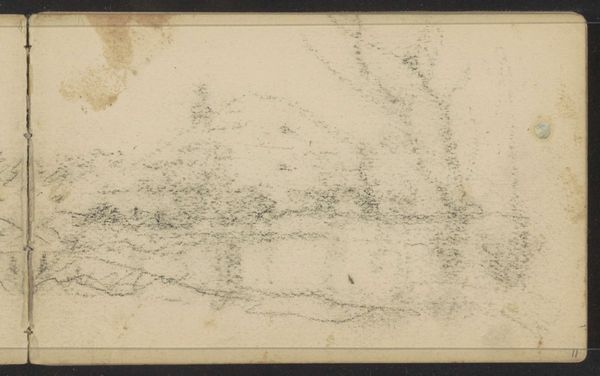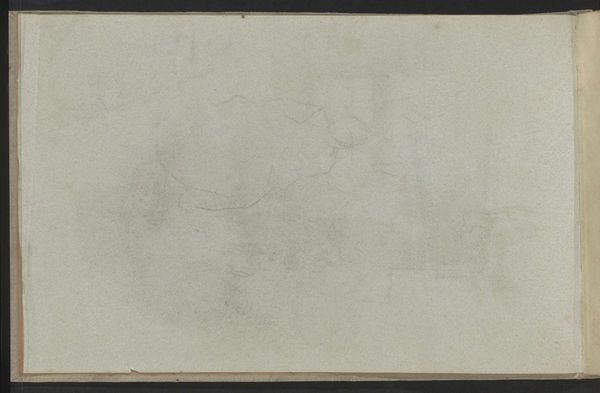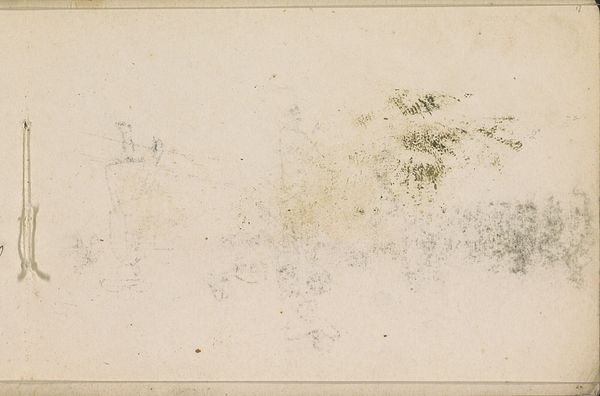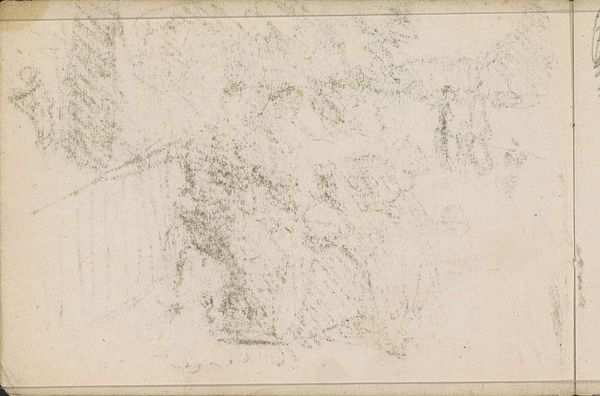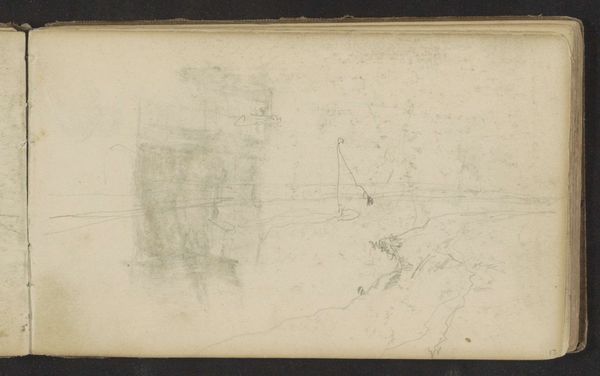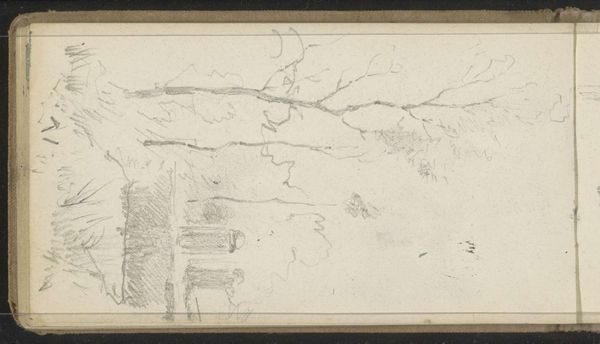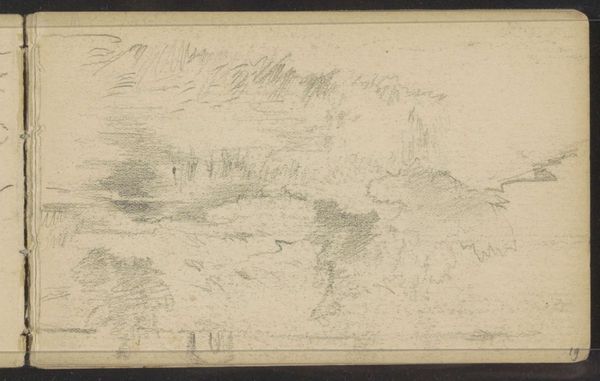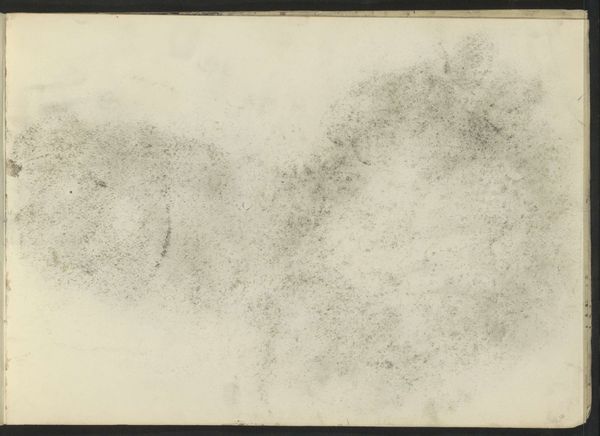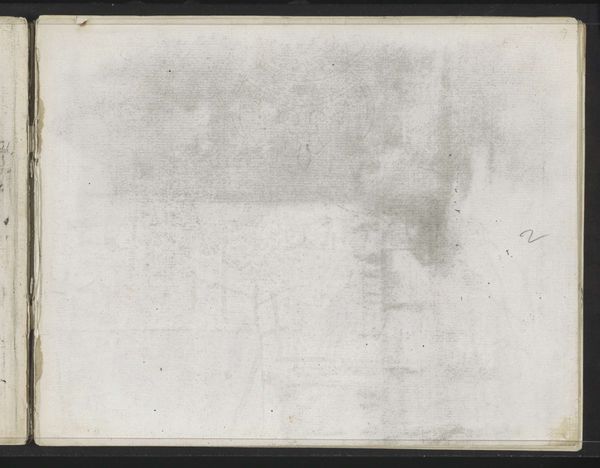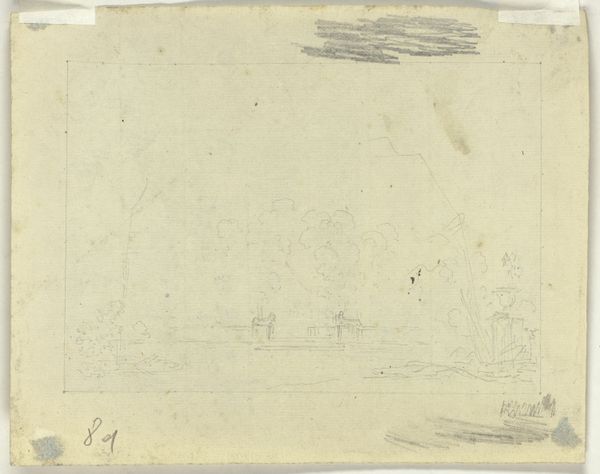
#
aged paper
#
toned paper
#
sketch book
#
incomplete sketchy
#
hand drawn type
#
personal sketchbook
#
sketchbook drawing
#
watercolour bleed
#
sketchbook art
#
watercolor
Dimensions: height 104 mm, width 179 mm
Copyright: Rijks Museum: Open Domain
Editor: So, this is "Studies" from 1895, by Willem Cornelis Rip. It looks like a page from a sketchbook, perhaps watercolor on toned paper. I'm struck by how hazy it feels, almost dreamlike. What do you see in this piece? Curator: From a formalist perspective, I am immediately drawn to the artist’s delicate handling of the medium. Observe the layered washes of watercolor; see how they create a sense of depth and atmosphere despite the limited tonal range. Notice, too, how the seemingly incomplete sketchy marks contribute to an overall impressionistic effect, inviting the viewer to participate in the image’s completion. What effect does the toned paper have? Editor: It definitely softens the contrast. It makes the white parts seem less stark, like the light is diffused. Does the absence of sharp lines contribute to that effect? Curator: Precisely. Consider how the soft edges and blurred forms deny clear definition. It invites the viewer to construct their own meaning through visual interpretation, relying on formal clues. What thoughts do you have regarding its structure? Editor: Well, it appears the composition is almost evenly distributed with a slight concentration of marks towards the center, yet those sketchy, unclear areas balance the image on either side. There doesn’t seem to be a single focal point pulling the eye in one direction. Curator: An astute observation. Indeed, the lack of hierarchy within the composition prevents a singular reading. It offers an interplay of marks, a field of visual data from which one may derive pleasure. How might we describe the work, simply using line and shade? Editor: It’s almost a study in textures – a smooth wash contrasting with a series of scribbles. Curator: A poetic reading. Ultimately, "Studies" presents itself as an exercise in visual language. By decoding its structural elements, we gain a deeper appreciation of Rip’s aesthetic intentions.
Comments
No comments
Be the first to comment and join the conversation on the ultimate creative platform.
